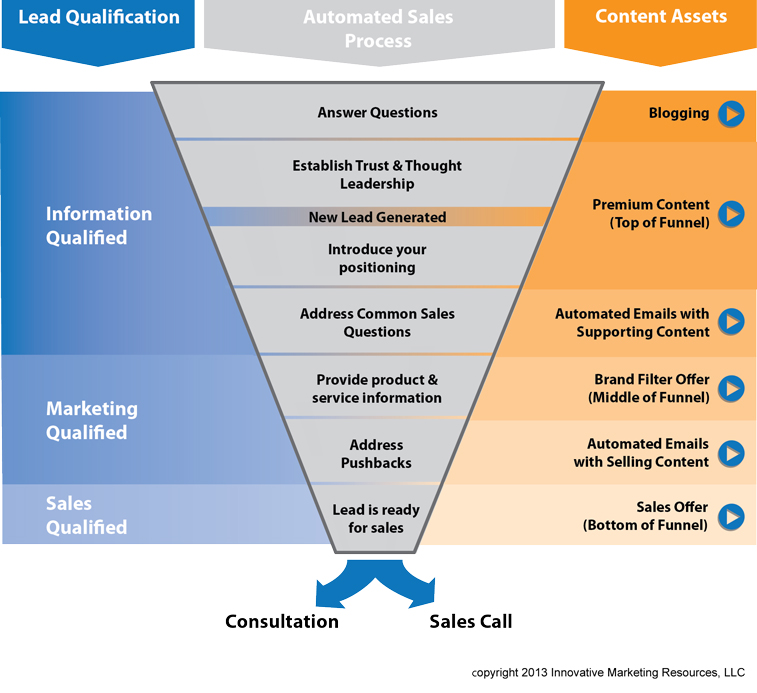Inbound sales is about providing customers with warm sales calls with relevant insights that are driven by their needs.
Sales and marketing have traditionally been quite separate departments. That separation was preventing them from numerous revenue generating opportunities. In order to take advantage of inbound sales you need to combine your sales and marketing teams. As HubSpot said in their video on Smarketing, “companies with strong sales and marketing alignment get 20% annual revenue growth.” This proves that a strong relationship between these two teams can yield tremendous results.
Sales and marketing should be able to understand each other. Its key that they are both able to communicate there metric results and work together towards achieving the overall goal of increased revenue. As Carole Mahoney from Mahoney Internet Marketing put it, “marketing is the matchmaker, but sales needs to do the dating.” Here is visual on how the marketing sales funnel works and shows the dependency that sales has on marketing:
Marketing does the majority of the information gathering while sales leverages that information to land a new customer. It is the marketing teams job to hook potential customers and engaging with them with the end goal of converting them into new leads.
The perfect sales ready lead is one that is a great fit and has a high interest. These leads could be individuals who downloaded an eBook, started a free trial, or submitted some personal contact information. Even though they interacted with you, that does not necessarily mean they are a quality lead. To ensure that no ones efforts are wasted it is important that the marketing team determines whether or not the lead is qualified, before sending them on to sales. As mentioned by New Breed Marketing in their eBook on inbound sales, “the first moments after a lead converts are critical in maintaining a relationship with that prospect and encouraging his or her excitement about your company.” So get them while their are fresh!
To ensure that the marketing and sales teams are on the same page throughout the closing stage of inbound marketing, you should implement a closed loop feedback system. This allows the marketing team to maintain up to date contact info and learn which marketing programs are working and which should be discontinued. The feedback also has sales team benefits such as preventing them from de-duplicating leads, helps them prioritize leads, and make more educated sales calls.
To maximize the quality of the customers experience during the sales call you need to first do some research. Before making the sales call you should already know a lot about the lead you are calling. This is just like when you are researching to prepare for a job interview. You need to do your company research so that you can align your skills with what the company is looking for in a candidate. This is important because during the call you need to be able to personalize the experience and break down the typical sales call barriers. Unlike traditional sales calls, the Inbound sales experience is focused around meeting the customer or leads needs and involves a more tailored phone conversation. All of this connects back with when I was talking about inbound marketing. Your job is to listen to your prospect’s and gain a clear understanding of your prospect’s interests and challenges. If you are able to prove that you are reaching out to provide resources and assistance versus just calling to score another deal, you better your chances of developing a lasting customer relationship.
Relating back to what I said back in my inbound marketing post, inbound success comes from a solid context regarding who your key prospects are. This can be down researching their LinkedIn or following their social media sites and engagements. A solid understanding on each of your leads or prospects interests and pain points will help support a deeper and more productive sales call.
